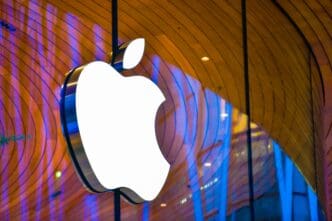Executive Summary
The Story So Far
Why This Matters
Who Thinks What?
The question of whether Apple’s colossal legacy can endure and evolve beyond the foundational brilliance of Steve Jobs and Steve Wozniak is a perennial one for investors and consumers alike. Despite the passing of co-founder Steve Jobs in 2011 and Steve Wozniak’s gradual disengagement, Apple has not only survived but thrived, transforming into the world’s most valuable company under the pragmatic leadership of CEO Tim Cook. This enduring success is rooted in its robust ecosystem, relentless innovation, and a strategic shift towards high-margin services, demonstrating a profound institutional resilience that extends far beyond its legendary originators.
The Foundational Pillars: Jobs, Wozniak, and the Apple Ethos
Steve Jobs’ visionary leadership, relentless pursuit of perfection, and design-centric philosophy defined Apple’s early trajectory and its most iconic products. He instilled a culture where technology met liberal arts, resulting in groundbreaking innovations like the Macintosh, iPod, iPhone, and iPad.
Steve Wozniak, the engineering genius, provided the technical backbone, crafting the Apple I and Apple II computers that kickstarted the personal computing revolution. His focus on user-friendly design and powerful, accessible technology laid crucial groundwork for the company’s future.
Together, they established an ethos of innovation, simplicity, and user experience that became synonymous with the Apple brand. This deeply ingrained DNA continues to influence product development, marketing, and corporate strategy, even decades after their primary involvement.
Tim Cook’s Transformative Stewardship
When Tim Cook assumed the CEO role, many questioned if Apple could maintain its innovative edge without Jobs’ direct influence. Cook, an operations maestro, quickly proved skeptics wrong by streamlining supply chains, optimizing production, and significantly expanding Apple’s global reach.
Under Cook’s leadership, Apple’s market capitalization has soared, driven by consistent execution and a strategic pivot. His tenure has been marked by an emphasis on sustainability, privacy, and corporate social responsibility, aligning the company with evolving consumer values.
This operational excellence allowed Apple to scale its existing product lines to unprecedented levels, turning the iPhone into one of history’s most successful consumer products. Cook’s pragmatic approach ensured stability and growth while subtly evolving the company’s strategic direction.
The Strategic Shift to Services
A cornerstone of Apple’s post-Jobs strategy has been the aggressive expansion of its services division. Recognizing the immense potential in recurring revenue, Apple has built out a vast ecosystem of offerings, including the App Store, Apple Music, iCloud, Apple Pay, and Apple TV+.
This shift has diversified Apple’s revenue streams, making it less reliant on cyclical hardware sales. Services now represent a significant and rapidly growing portion of Apple’s financial performance, boasting impressive profit margins and fostering greater customer loyalty.
The services segment strengthens the overall Apple ecosystem, encouraging users to remain within the Apple walled garden. This stickiness provides a competitive moat, making it harder for customers to switch to competing platforms, further securing Apple’s long-term financial health.
Innovation Beyond the Founders
While some argue that Apple’s most revolutionary products emerged during Jobs’ tenure, the company has continued to innovate and introduce new, highly successful product categories. The Apple Watch redefined the smartwatch market, and AirPods became a cultural phenomenon, dominating the wireless earbud space.
More recently, Apple unveiled the Vision Pro, its ambitious entry into spatial computing, signaling a commitment to pioneering future technological frontiers. These developments demonstrate that Apple’s capacity for groundbreaking product development remains robust, fueled by a deep bench of talent and substantial R&D investments.
Innovation is no longer solely dependent on a single visionary leader but is embedded within Apple’s organizational structure, its vast engineering teams, and its culture of continuous improvement. The company consistently refines its core products, enhancing user experience and integrating new technologies.
Navigating Challenges and the Competitive Landscape
Despite its dominant position, Apple faces significant headwinds. Regulatory scrutiny regarding its App Store policies and market power is intensifying globally, posing potential threats to its services revenue model. Antitrust concerns could force changes to its ecosystem.
The smartphone market is maturing, and competition from Android manufacturers remains fierce, particularly in emerging markets. Apple must continually innovate to justify its premium pricing and prevent market share erosion in its core hardware segments.
Geopolitical tensions, particularly concerning manufacturing in China, also present supply chain risks. Apple’s ability to diversify its production and navigate complex international relations will be crucial for its future stability and operational efficiency.
The Enduring Power of Brand and Ecosystem
At the heart of Apple’s enduring legacy is its powerful brand identity, synonymous with quality, design, and premium experience. This brand loyalty fosters a dedicated customer base willing to pay a premium for Apple products and services.
The seamless integration across its hardware, software, and services creates a highly sticky ecosystem. From iPhones and Macs to Apple Watch and AirPods, the products work together effortlessly, enhancing user convenience and reinforcing the value proposition.
This integrated approach minimizes friction for users and maximizes the value derived from each device, making the entire Apple experience greater than the sum of its individual parts. This ecosystem is a powerful barrier to entry for competitors and a strong driver of repeat business.
A Future Forged in Resilience
Apple’s journey beyond its founders illustrates a powerful lesson in corporate evolution and the institutionalization of innovation. The company has successfully transitioned from a founder-led enterprise to a mature, diversified technology giant capable of sustaining growth and relevance.
While the specter of Jobs’ genius will always loom large, Apple’s current trajectory is a testament to its current leadership, its deep talent pool, and a deeply embedded culture of excellence. The company has proven adept at adapting to market shifts and capitalizing on new opportunities.
For investors and consumers, Apple’s continued success suggests that its legacy is not merely surviving but actively evolving, driven by a strategic vision that extends far beyond the initial sparks of its two brilliant founders.








